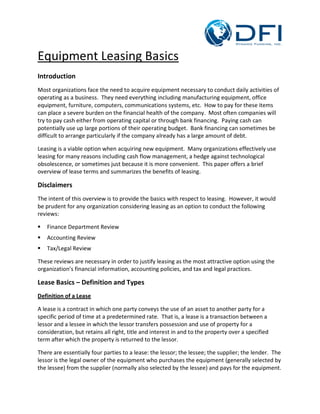This document provides an overview of equipment leasing basics. It defines what a lease is and describes the main types - capital/finance leases and operating leases. Capital leases are similar to purchases, while operating leases are more like rentals. The document discusses some common myths about leasing and explains the key benefits, such as preserving cash flow, obtaining tax benefits, and allowing for off-balance sheet financing with operating leases.









